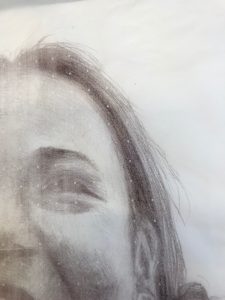
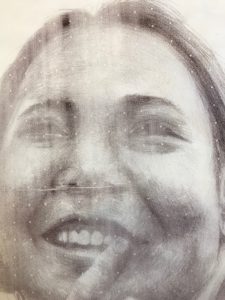
To follow on from the recent article on silk screen beading. Another departure has come to light: the opportunity to enjoy Material Encounters* in the formation of a new portrait image.
When preparing to screen print I make the first test pull on newsprint or tissue paper. The tissue paper creates a ‘flimsy’ image on flimsy material. On this occasion the vacuum holes on the screen bed pulled the tissue into them and therefore the ink did not reach the tissue and left them blank. This gave a patterned effect on the portrait not unlike the digital image on faces that are being mapped for facial capture masking.
Perhaps hanging the 4 portraits together might be a plan for future exhibition
Dr Catherine Baker reviewed this approach and suggested the chance effect gave more to the portrait than the ‘rather disjointed’ 2nd beaded layer. Perhaps I might pursue this surprise accident as it might provide a new and valuable technique.
I dedicated a full print w’shop session to experiment and investigate this ‘vacum dot’ opportunity. Thinking through the elements that might make the dots more effectively to come through: in particular thickness of ink, squeegee pressure, type of paper, position of the tissue paper in relation to the vacum air holes.

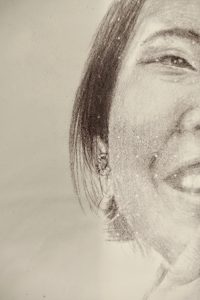
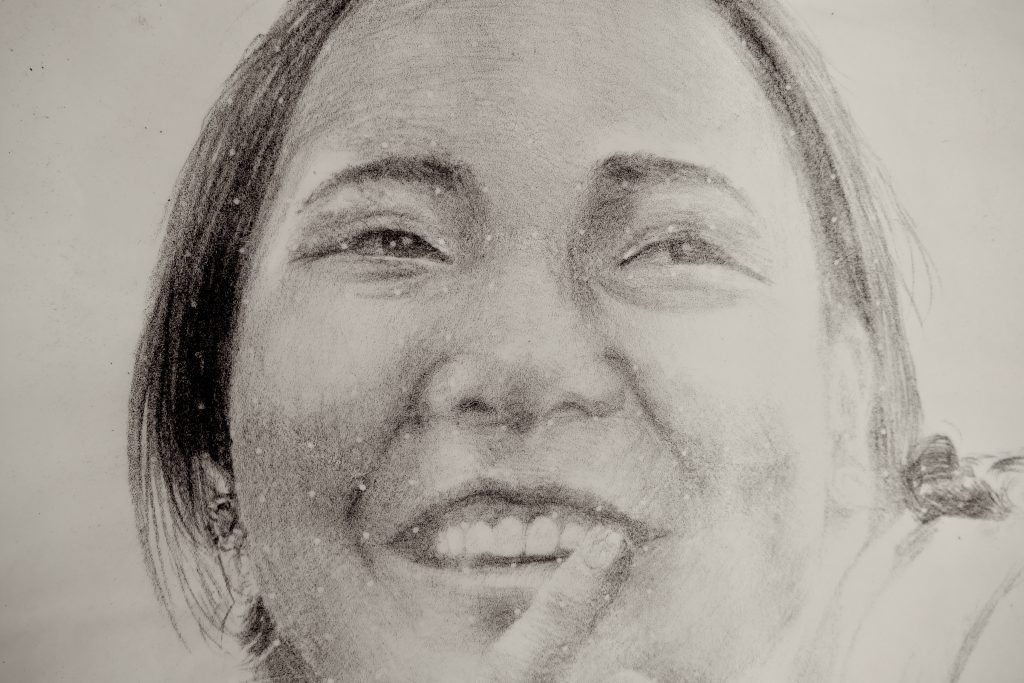


The tissue dot prints were adding a new texture and potential interpretation to the portrait. More modern. More questioning of the figuration. By varying the positioning of the paper the dots could appear on the darker areas of the image and enhance their visibility. The ink mix was made very thick and sticky with little medium and retarder to keep the ink from reaching down into the dot recesses created by the vacuum in the tissue paper.


Very fine Gampi Paper was tested which gave a more defined white dot effect. The paper was also more delicate and provided a subtler effect than the basic ‘grey’ tissue paper. More experimentation is required with this paper to assess the additional values it may bring. Just working with the paper brings a more delicate and careful ‘feel’ to the process.
My research had shown that the chance vacuum dot matrix visual effect could be replicated in predictable ways. However having proved this to be possible for future prints and rather than proceed to making a new print, I was drawn to the material difference printing on light weight semi transparent paper brings to the final portrait. Like the original print on Canaletto paper the tissue print may be framed in a conventional way behind glass, but the physicality and fragility of the paper and the portrait it holds on its surface gave motivation to investigate where this observation might take the exhibition of the work.
As the prints were now on a transparent medium they were hung flat on a studio window. The back illumination of the image encouraged the portrait to ‘float’ on the paper and the dot matrix became more prominent on closer viewing.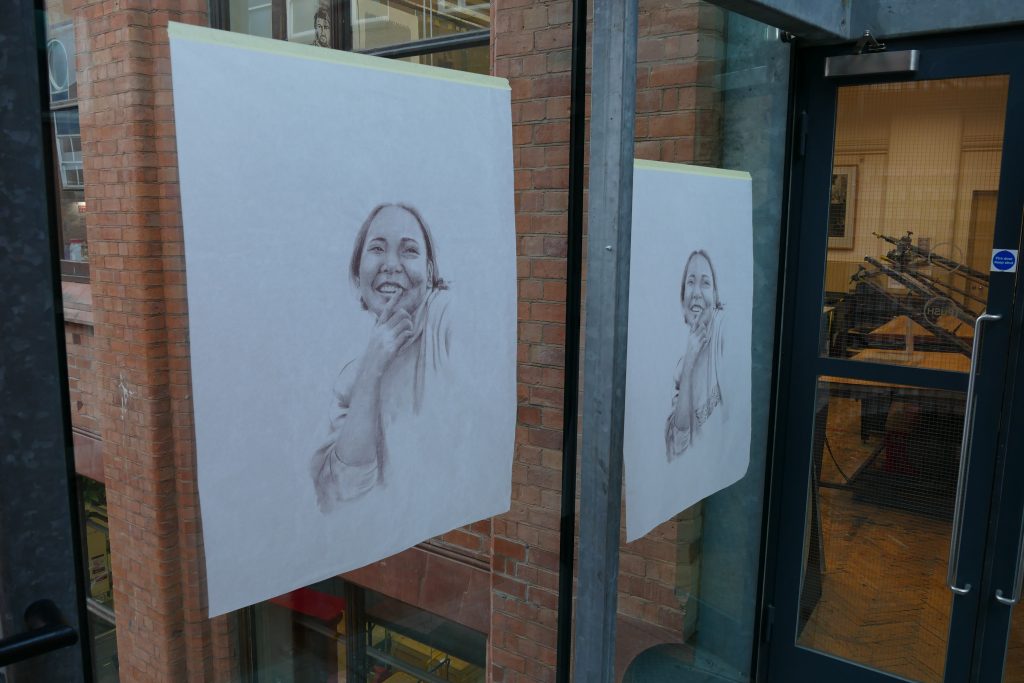
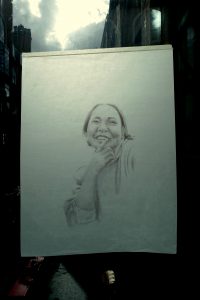
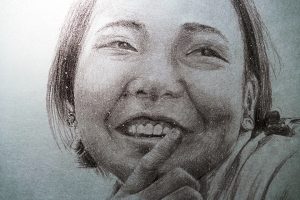
A further hanging was introduced. Hung irregularly on the window, from one corner of the print brought another interpretation. The portrait sits on the paper and is illuminated from behind. This is getting back to the mark resist film drawing original. A transparent film for the portrait to lit. It also brings a three dimensional ‘unframed’ presence to the image and the material it is held within.
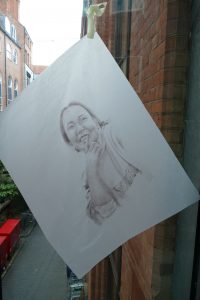
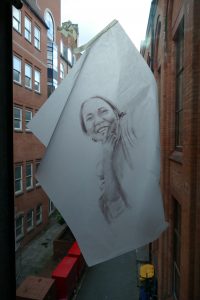
Another light source was the Lightbox which provided a soft border to the prints. Then laying prints upon prints gave a repeat patterning which delivers a further interpretation of the portrait.
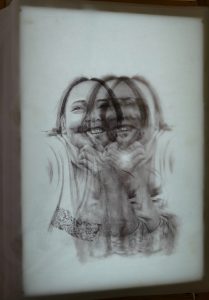
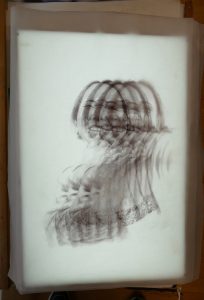
Finally for this period of investigation that began as drawn silkscreen portrait printed on to flat white paper; followed by additional layers of beaded marks and inks; print on to tissue paper; a vacuum dot matrix onto transparent papers hung on windows and material layers of print, the above clip captures the handling of the tissue print from floor to bench and a smoothing of the image on its fragile paper.
- Material Encounters Research Centre
MATERIAL ENCOUNTERS intends to extend and interrogate the boundaries of materiality within the context of contemporary art. The centre provides a critical intellectual space for the exploration of embodiment, subjectivity and aesthetic practices as they are encountered through material and theoretical investigations. Central to the discourse between the researchers is a shared commitment to examine the possibilities and unknowns of matter as a critical meeting point between thought, intention and the expectancy of what might transpire. The centre researchers occupy a broad territory across contemporary art theory and practice embracing cultural exchange and collaboration with scholarly partners both within and beyond the academic environment. This diversity facilitates a thought-provoking and richly discursive situation contributing new thinking and insights to an international community of researchers in contemporary art.

